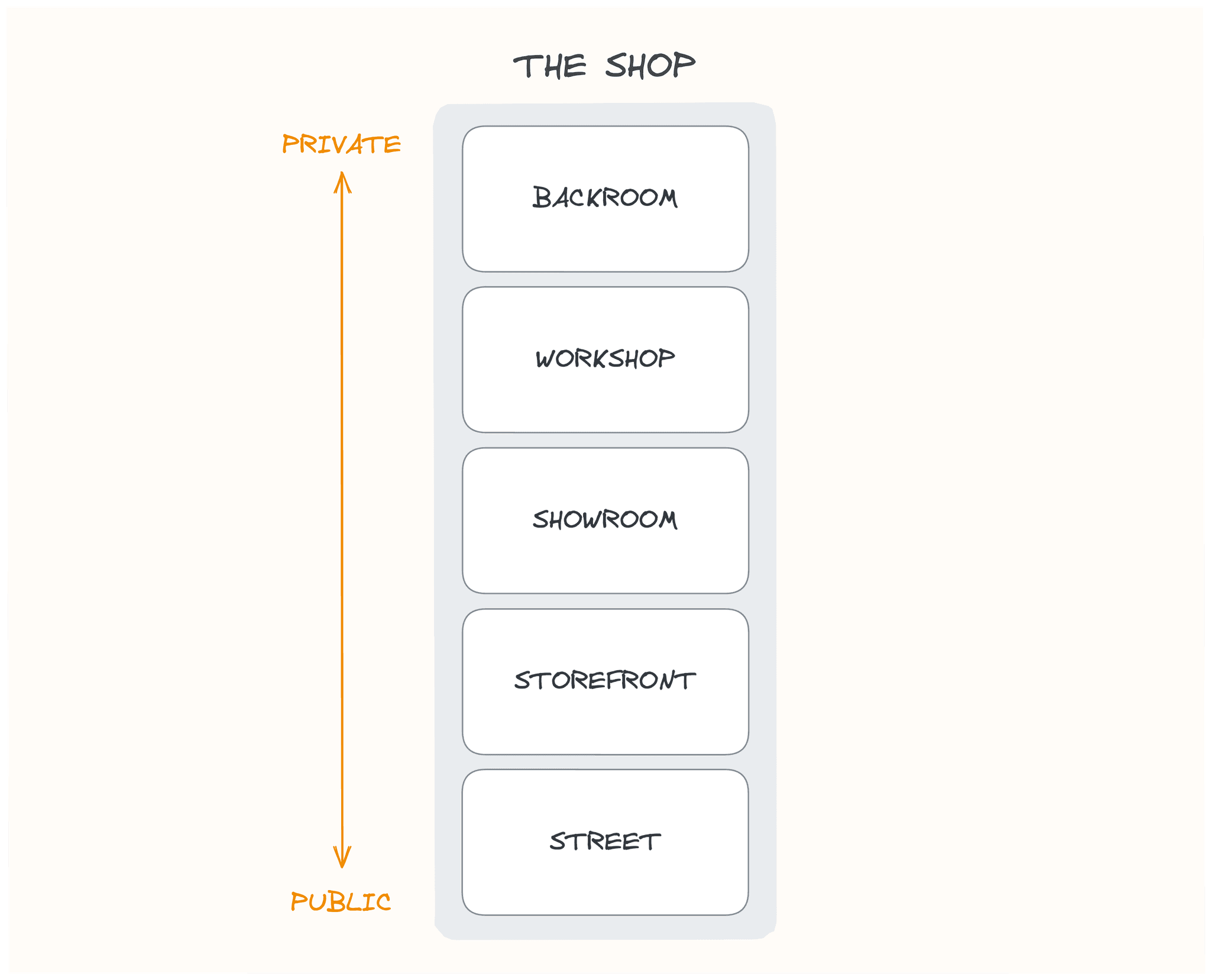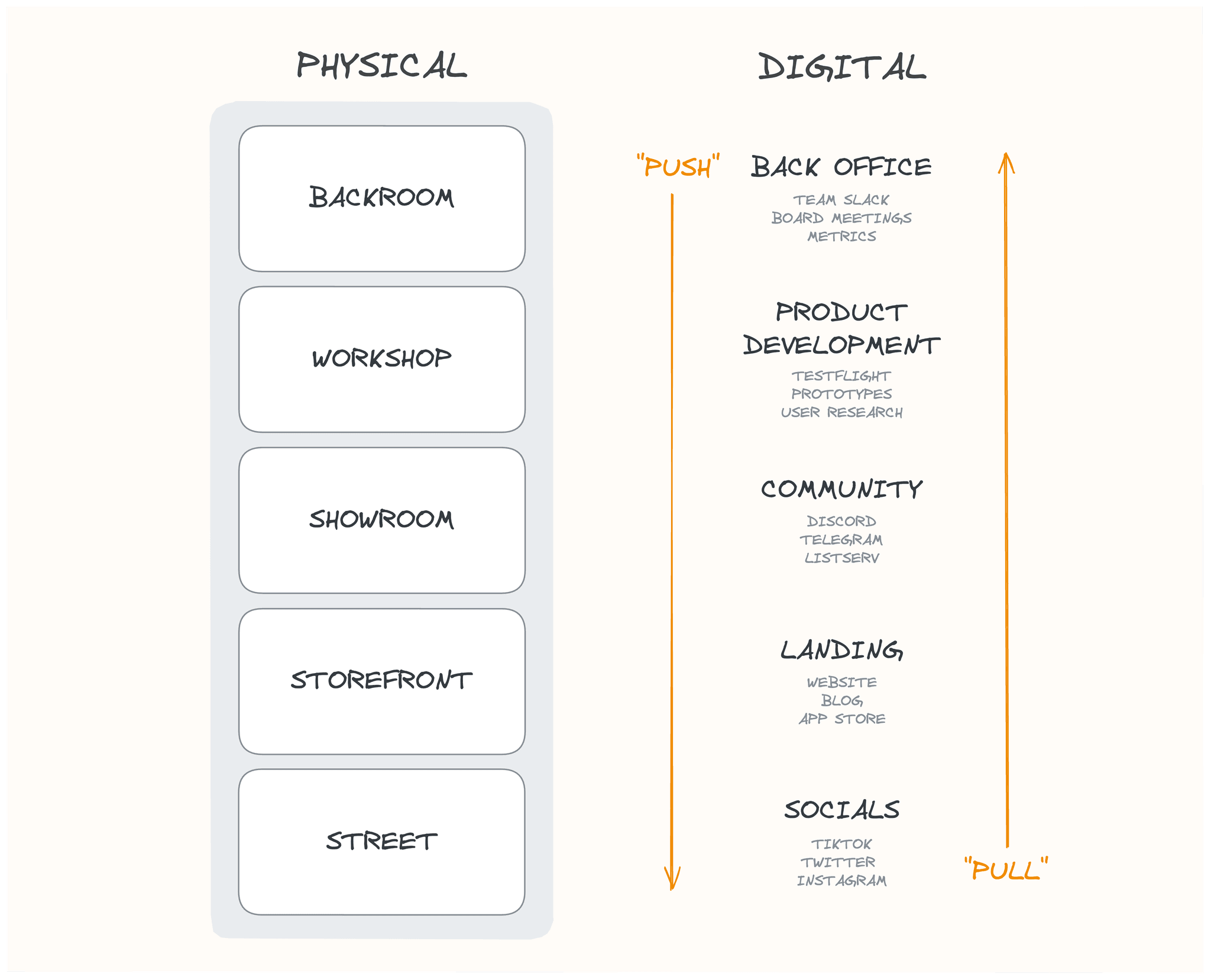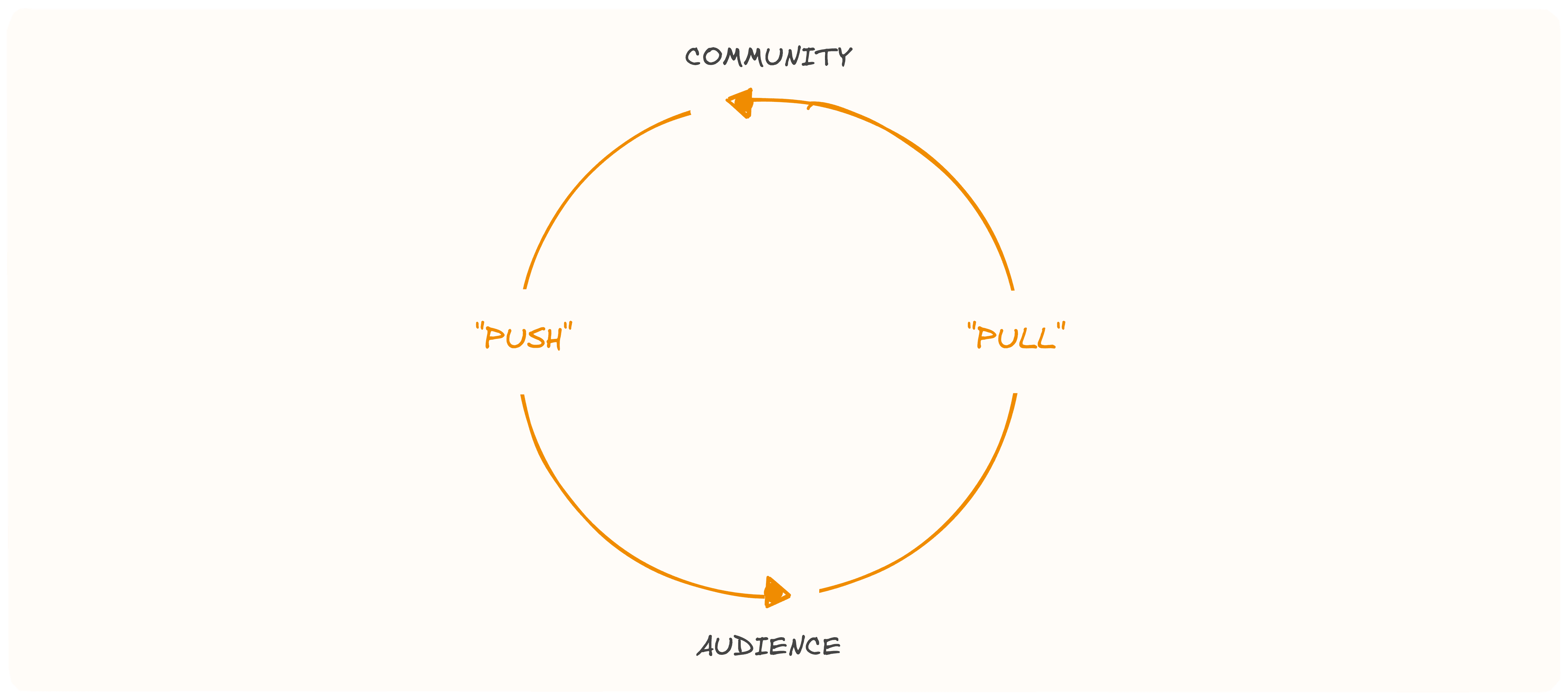The Shop Theory of Building in Public
Why you shouldn't put everything out on the street.
We applaud ‘building in public,' but the way we think about it is too literal. It's too dependent on public displays — on putting everything out on the proverbial street.
A better way to "build in public" is to engage the public, but not always in public. I like to draw an analogy to physical retail — with what I call the "shop theory" of building in public.

The state of "building in public"
"Building in public" can be defined a thousand ways, but I simplify it to this: sharing the process, not just the finished product. We've seen some inspiring, hyper-public examples over the past decade, but it's not as valuable as it once was.
The pros and cons
The biggest pro is that when you put yourself out there, good things can happen. You find customers, supporters, investors. You can get valuable feedback and ideas. This can be very helpful if you have no audience or community. (Or if you have a finished product and you're in sell or scale mode, i.e. PMF.)
And the cons: When you build in public, you get judged in public. People passively evaluate without giving useful feedback. Some are competitors. Some are potential investors. Some are just haters. Regardless, you have to absorb some bad vibes. Another big con — the content mill and public upkeep can distract you.
Where's the "alpha?"
"Building in public" had the greatest alpha when nobody was doing it. It was radical to be transparent about plans, progress, lessons, etc. But now, everyone's doing it. It's not that noteworthy unless it comes from notable people or the content goes viral. Hence the value-to-effort ratio for building in public has dropped.
Pseudo-mathematically then the scales tip towards being discreet. [1] But this doesn't mean going full stealth. Instead, I see it as engaging the public, but not always in public. "Building in public" should be less about just pushing content out, and more about pulling people in. This is the basis of the shop theory.

What is the "shop theory?"
Unlike digital businesses, physical retail shops are designed to draw people in. Each shop has distinct physical spaces. Consider these common ones, from least public to most:
Backroom: staff offices, storage, etc.
Workshop: on-site production, packaging, demos, education
Showroom: finished products and staff engaging customers
Storefront: curated product and brand displays for the public
Street (frontage): signage, samples, staff engaging the public

The "street" is fully public — sometimes there are street racks, samples, signage, or even staff engaging pedestrians. In some cases the "sale" can be made right there. Passers by can window shop. Curious people are enticed to enter the shop.
Inside, they find patrons and people with shared interests. They talk with staff, ask for help, give feedback. There may even be an on-site workshop (e.g. the coffee shop with a roastery you can tour, a jewelry store where you can get a quick polish).
The point is that "sharing" and engaging the "public" doesn't just happen on the street. It happens via the storefront, in the showroom, maybe in the workshop. The point of a compelling public presence is to draw people into the store, not to replace it.

How does the "shop theory" apply to the digital world?
What if the product is software, the user experience is mostly online, or both? We can draw parallels between the distinct physical spaces of a shop and digital spaces / functions:
Back office: behind the scenes team comms, operations, data
Product development: user research, design, product, testing
Community: users, advocates, and their sphere of influence, often gathered in a digital "container" (e.g. a Discord server)
Landing: a digital "storefront" (e.g. website, app store page)
Socials: broadcast platforms where the "public" hangs out

Generally we only think of "socials" and "landing" as public (or channels to engage the public). But the shop theory says to effortfully bring the public into other spaces — those that are gated, semi-private, or historically entirely private.
When you do this, it becomes less about just sharing the process and more about engaging people in it actively. More tactically, giving people an inside look from the inside is a much more compelling pitch than just showing them a picture of it.

What is the "push-pull" flywheel?
When you take what's private and put it in the public, I call that a "push" strategy. When you do the opposite (e.g. bring the public into private spaces) I call that a "pull" strategy. Ideally, you use a strategic mix of "push" and "pull" and it creates a flywheel. [2]

"Push" tends to be content-heavy and elicit passive engagement from a large group. Meet people where they are and give them something to digest (e.g. broadcast, synchronous or asynchronous content). It's especially valuable to:
Build an audience: build a following for the product or yourself
Build awareness: increase familiarity with product and brand
Increase surface area for luck: take a shot at going viral or making a trajectory-changing connection with the right person
"Pull" tends to be coordination-heavy and elicit active engagement from a smaller group. Pick strategic channels with relevant audiences (e.g. for betas, experiments, events). Use calls to action to bring people in (reply, DM, sign up, join, attend, etc.) Invite them into spaces you control (i.e. don't depend on algorithmic platforms). It's especially helpful to:
Build a community: curate high intent users & supporters
Spark collaboration: get quality feedback, ideas, & partners
Recruit: convert supporters into team members and investors
The prevailing “building in public” phenomenon tends to focus on the “push” strategy. The shop theory elevates the “pull” strategy to be equally, if not more, important. You'll want both at different points in time, and the truth is that some people will find one easier to do than the other.
If you strike the right balance, the "push" builds an audience and the "pull" builds a community. And, best case, you can create a flywheel that simultaneously grows both audience and community (with the community increasingly "pushing" and "pulling" on your behalf).


Applying the shop theory
These days we tend to talk about what brick-and-mortar retailers can learn from online businesses. The shop theory does the opposite — draw lessons from offline that are instructive for building in the digital world. The parallel between "spaces" and how the public engages in them is just a piece of it: [3]
Identify your digital “spaces” – street, storefront, showroom, workshop, back office, etc. — what happens in each and where they sit on the private-public continuum.
Figure out what you want to push — the content that you want to put out into the public – and where. Share your philosophy, process, and work in progress. Build an audience.
Figure out who you want to pull — the people you want to bring into your private or semi-private spaces. Curate and actively engage interested people. Build a community.
Nurture the flywheel – balance the “push” and “pull." Build a street presence, but don't put everything out on the street. Grow your audience and community simultaneously to compound your efforts.
“Building in public” and “building in private” have historically been treated as if they’re oil and water. The build-in-public warriors say open source your process as much as you can. The build-in-stealth warriors say don’t give anything away until you’re ready to launch. Instead, think of “public” and “private” as a continuum, then apply the shop theory.

If this working theory resonates, please consider sharing it with a friend (or on socials) & subscribe to my newsletter below. 🙏
[1] Being more discreet is not a deliberate exclusivity or FOMO strategy, but sometimes that'll be a by product. However, it is a strategy to (maybe paradoxically) increase buy-in and filter for high quality supporters by increasing friction.
[2] "Push-pull" is sometimes talked about in supply chain management and marketing; this is closer to the second. Wiki article here.
[3] What do you call it when you extend a functional or purpose metaphor from the physical to digital realm? It's not skeuomorphism (that's a design metaphor), but it's something like it. If there isn't a word for it, I might try to come up with one.
